How to Get Started Hunting Mushrooms
I love hiking in the woods, racing to the top of a mountain to take in a satisfying view. Lately however, I’m less interested in flying up rocks and roots to see the world from afar. I’ve found an even stronger compulsion to explore. Bitten by the mushroom bug, I now meander back and forth, on and off trails, my eyes perpetually scanning the small universe underfoot. Constantly hunting the edible, medicinal, psychedelic, and sometimes just beautiful fungi.
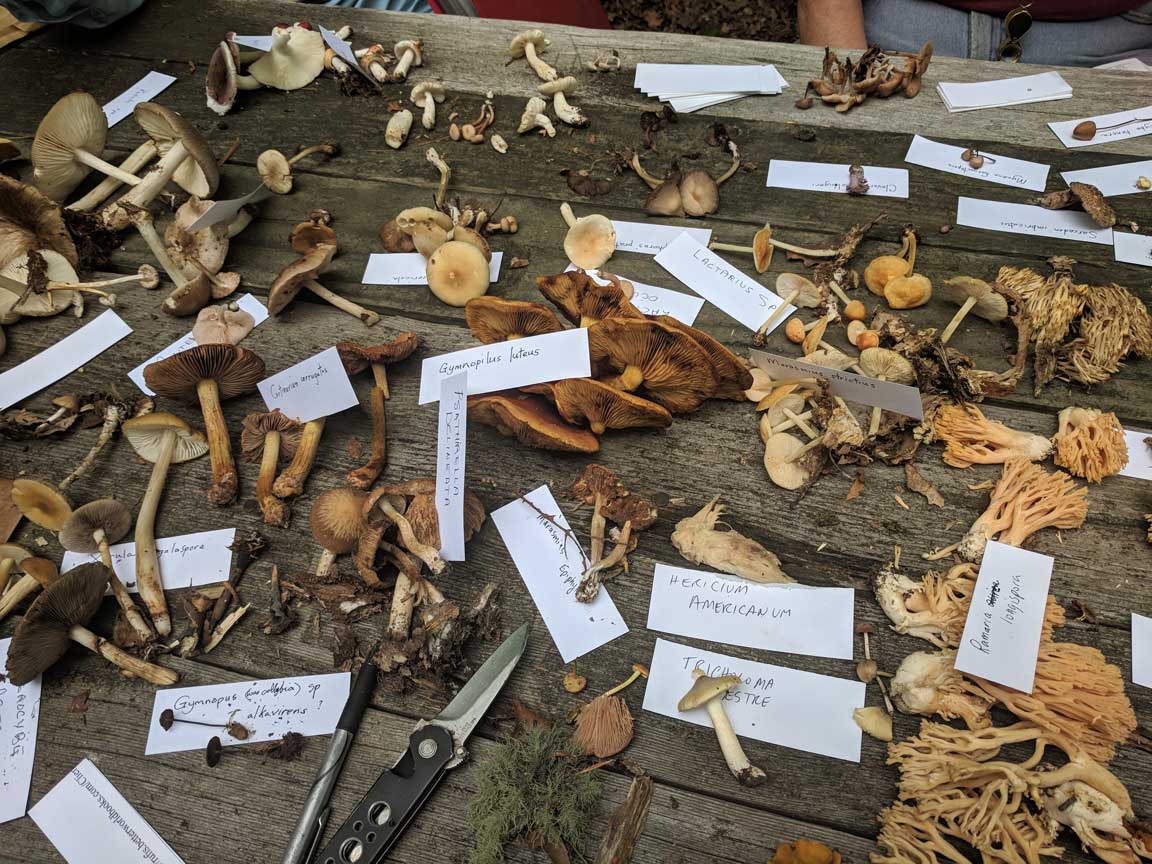
First, there are risks when hunting mushrooms
If you’re like me, the most alluring part of mushroom hunting is finding troves of delectable mushrooms for the table. In that case, I have to start this post with a disclaimer. I’m not a professional mycologist. If you find some mushrooms in the woods, it is your own responsibility to properly identify what you eat. Some mushrooms are deadly poisonous.
With that said, there are very few actively poisonous mushrooms, and even fewer that will actually kill you. The space between what we know as edible and poisonous is occupied by thousands of species of mushrooms that are neither.
We’re also a bit mycophobic here in the US. Mostly because we aren’t exposed to wild mushrooms in the same way as other cultures. Traveling throughout Europe, it’s the norm to see a dusty old woodsman with feathers coming out his hat selling foraged herbs and mushrooms freshly pulled from the forest. Here, we only see farmed mushrooms that hardly resemble the varieties growing wild.
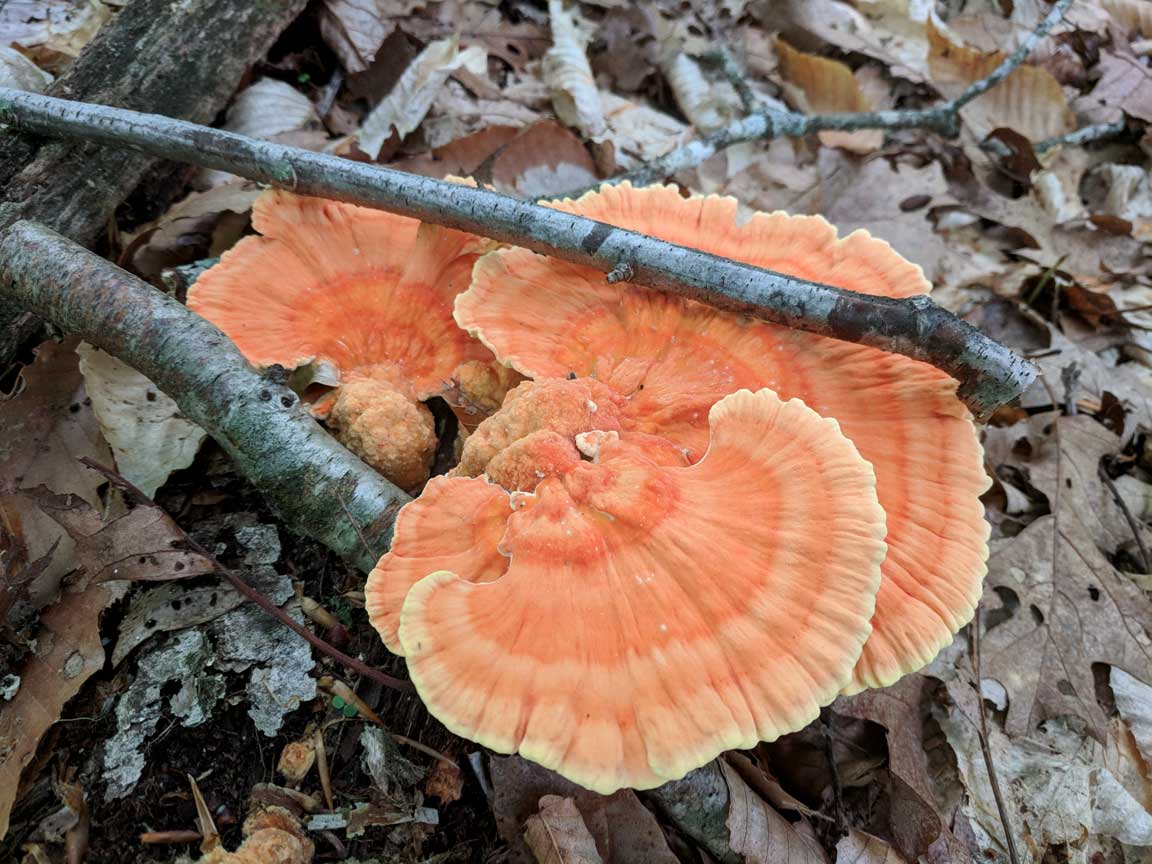 Some mushrooms are easily identifiable, and don’t have poisonous lookalikes.
Some mushrooms are easily identifiable, and don’t have poisonous lookalikes.
Even if you didn’t grow up with wild mushrooms, learning to be safe isn’t difficult. Most of us have already learned that you shouldn’t eat a bloated can of beans at the risk of botulism. We also know that raw chicken in the back of the fridge isn’t going to last forever. There are basic rules for avoiding questionable food, and as a mushroom hunter, you pickup similar rules. The best way to start is with someone who is experienced.
Don’t go it alone
A few years ago, we tried to start mushroom hunting on our own. I did extensive research online trying to identify edibles that we picked in the woods. Even though I found plenty of good books and blogs out there, I never gained enough confidence in our identifications. Many mushrooms look similar in pictures, and I didn’t understand all of the lingo and clues.
We ate some, but it made me extremely nervous (as it should have) and we soon gave up.
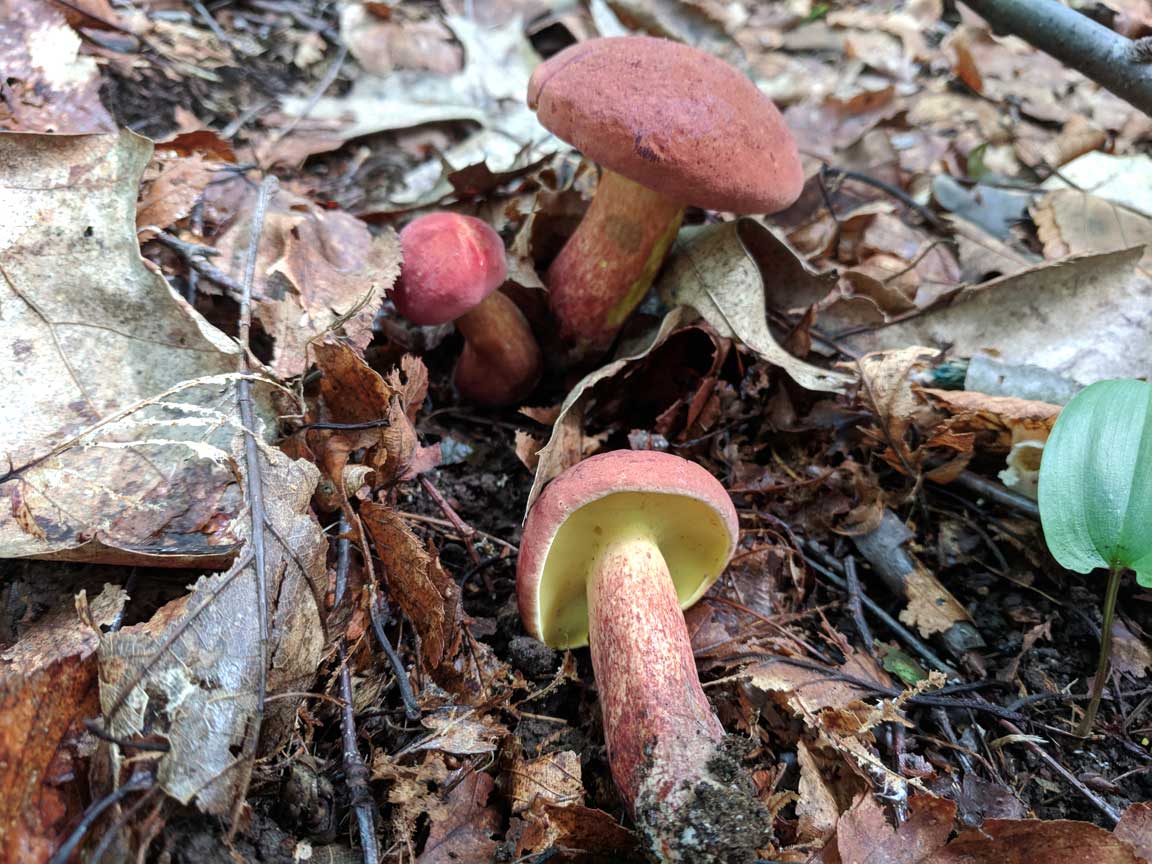 The boletus bicolor is a delicious edible, but is tough to identify from several look-alikes.
The boletus bicolor is a delicious edible, but is tough to identify from several look-alikes.
What I needed was an education in mushroom sleuthing, and a knowledgeable teacher. I knew the next step in getting serious would be to join a mycological society, but that sounded like something for serious mycologists.
After spending the last few summers on the road, we decided to take it easy this year and enjoy the local life. Mushroom hunting is an excellent cheap hobby to do close to home, so I finally decided to join our mycological society.
Why you should join a mushroom club
First off, our mycological society isn’t nearly as serious as it sounds. When we joined, we got a booklet listing the meetups for the season – a new state park to explore each weekend. We show up at the designated time and place, then everyone goes their separate ways to find what they can. It’s like a giant treasure hunt.
Some people stay close by, others cover as much ground as possible. It doesn’t matter if you know what you’re looking for, the main objective is to collect as many different species as possible.
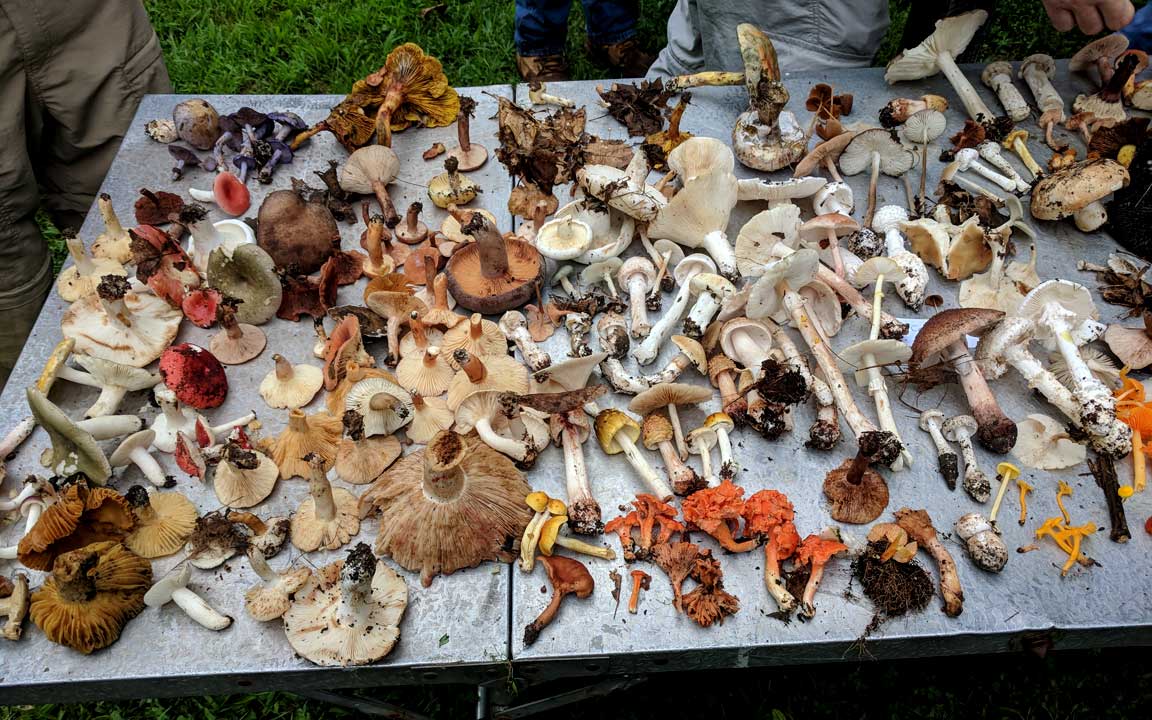 A sample from a recent foray
A sample from a recent foray
At a set time, everyone returns and puts their mushrooms on display. The collector has first rights to keeping any specimens, but every mushroom goes on the table. Mushrooms that look similar are grouped together, and slowly everyone starts labeling what they know while chomping down on packed lunches.
Even without finding edibles, identification can be exciting
Surprisingly, this has become my favorite part – seeing how many species (we often identify over 100 in a foray) turn up. Yes, some mushrooms might make for an exquisite dinner. Some might even leave you listening to the Grateful Dead while talking to your chickens and staring at flowers as if you’d never seen them before. But beyond the edible, medicinal, and even psychoactive properties, mushrooms are fascinating to study.
In addition to a knife and a basket, the most common tool carried by mushroom hunters is a 10x magnification jeweler’s loupe (affiliate link.) Some of the most interesting features of mushrooms can only be gleaned with magnification.
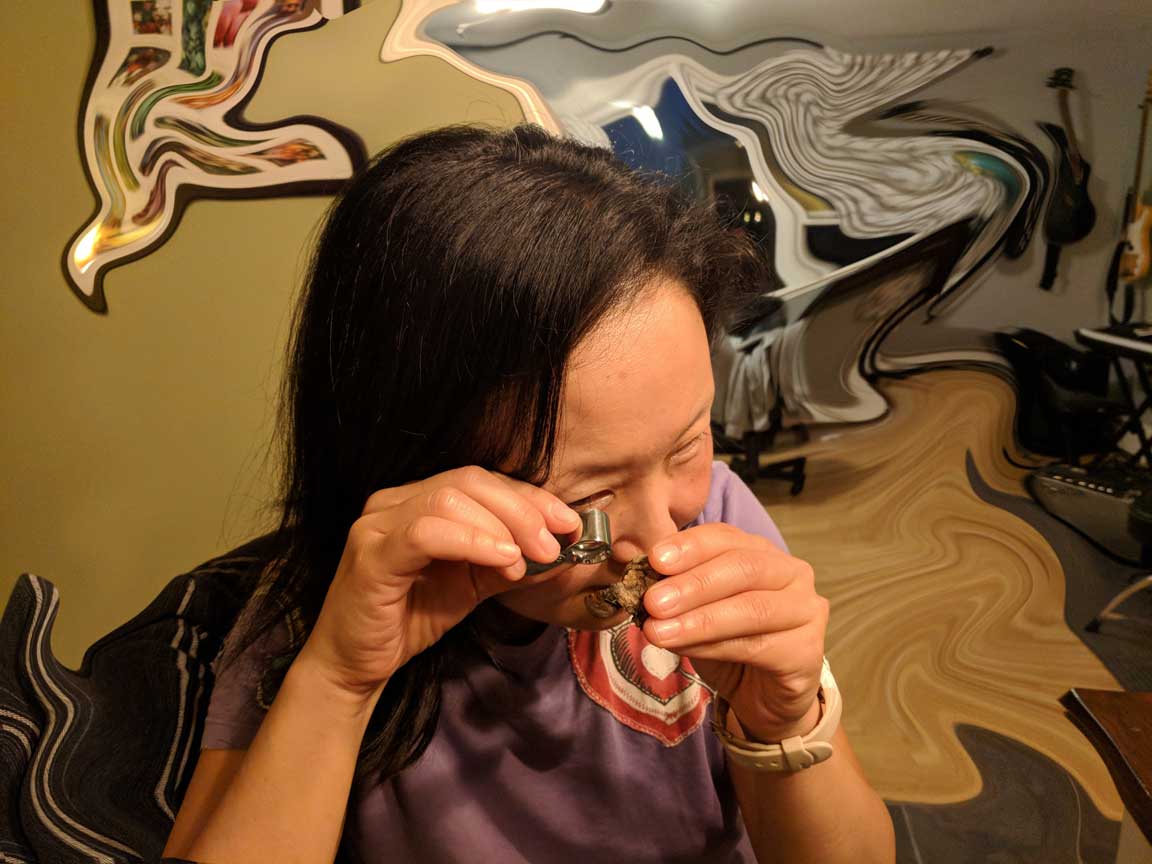
Looking at these tiny mushrooms under magnification is like taking a peek into another world. One stick can contain a small forest of mushrooms along with curious critters (some mushrooms have their own unique bugs) that inhabit them. In many ways, examining a nice specimen through a loupe reminds me of snorkeling.
Even after identification, it’s not uncommon for members to spend hours picking up specimens and examining their look, smell, feel, and taste. Each time an interesting observation is made, everyone scurries to see it for themselves.
Often times there are mushrooms that remain a mystery. There are thousands of species of mushrooms, and many of them remain unknown to science. On any given day, you could find yourself on the forefront of mycology by picking up a whole new species.
Everyone can contribute in a mushroom foray
The great thing about the mushroom club is that anyone can contribute. No one person can canvas an entire park, and some members aren’t as mobile as others. Even if you don’t know what you’re looking at, you might happen upon some rare treasure.
On our first hunt, we returned to the meeting table and started pulling out our collection when one member suddenly stopped talking. Mouth agape, he gasped as he grasped a stick we collected with small red mushrooms. Too enthralled to mutter a word, he carried it off in silent reverence to its own special spot. It was hard not to feel a little pride in our find, even if we had no idea what it was.
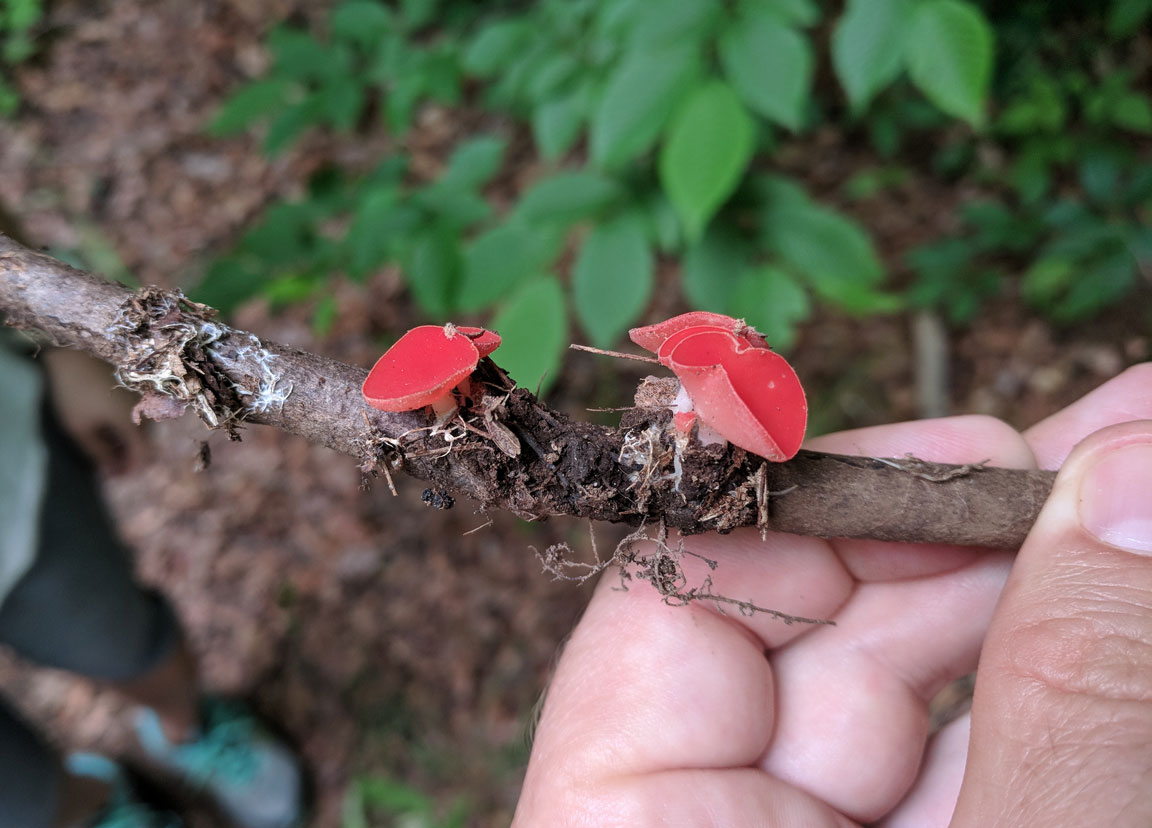
In return for putting in the miles canvasing the park, we get a free education. That same guy took the time to teach me ways to distinguish some mushrooms that, at first glance, looked exactly the same to me.
The important thing is to make an effort. Mycology clubs aren’t schools or institutions that you pay for an education or identification service, it’s a group of people helping each other learn and get the most out of this awesome hobby. At the end of the day, it’s still your own responsibility to properly identify any mushrooms you consume.
How to get started identifying mushrooms
Some mushrooms are easy to identify, but others can be nearly impossible (without microscopy or even genetic testing) to tell apart. The key is in learning the clues to look for, and gathering as much evidence as you can.
Details about where it’s growing and on what medium, the stem shape and color, whether it has gills or pores, the size of the gills/pores and how are they attach to the stem, the cap shape and its color/patterns, and the time of year the specimen is growing are all important.
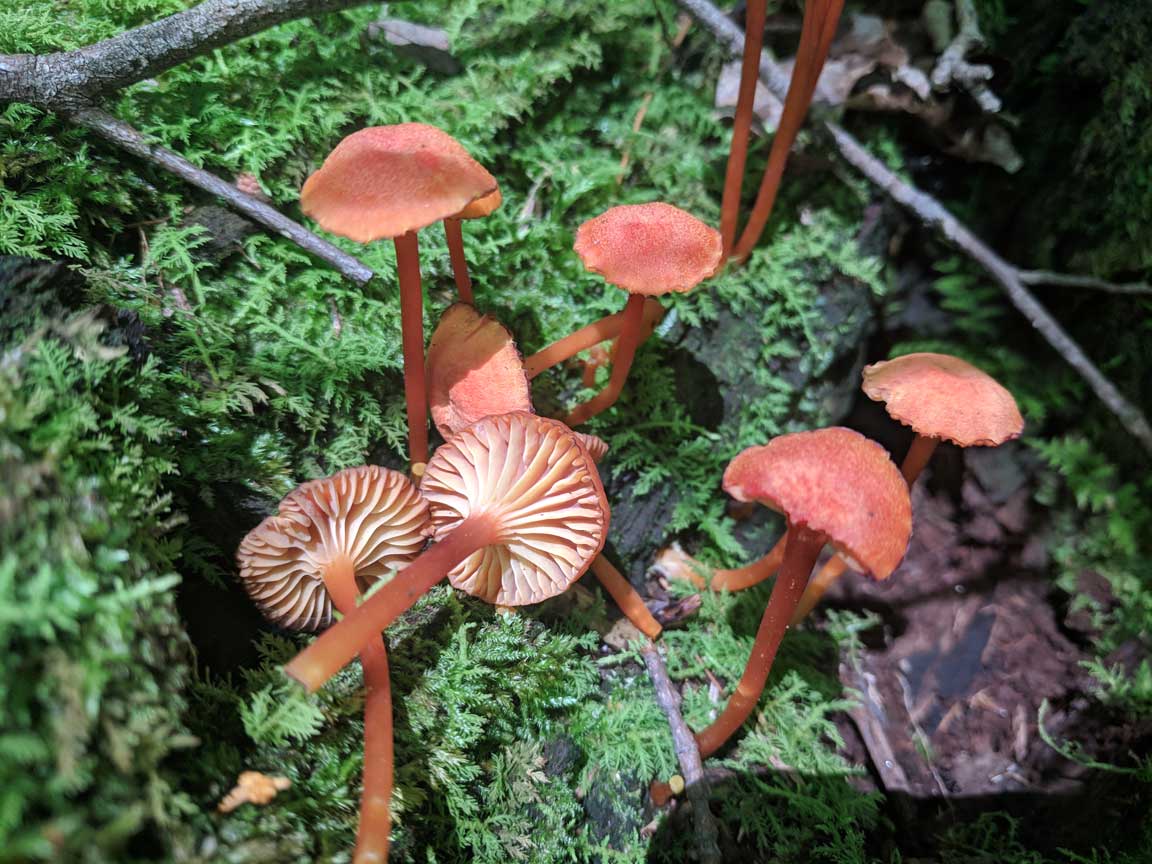 If you take pictures, try to capture as many clues as you can.
If you take pictures, try to capture as many clues as you can.
If you do happen upon mushrooms that you want to identify, take pictures with specimens at different angles in the wild. Picking the mushroom and taking spore prints is important, but so is knowing the mushroom’s habitat.
Good pictures will also increase the chance of getting help from online forums. A few sites I use include mushroomobserver.org and the r/mycology subreddit on Reddit. Just remember, your part of the contribution is a quality picture – the better it is, the more likely someone will try to help you.
Just by browsing the postings on these forums, you might start to see the differences in certain mushrooms, and get an idea of what kinds of mushrooms other people are finding this time of the year. Sharing a good find on a forum also has the benefit of peer review. People are quick to question incorrect identifications, and a dent to your ego is better than possible poisoning.
How to find edible mushrooms
When you pick mushrooms, all you’re picking is the fruiting body from a much larger organism. The mycellium – the vegetative body of the mushroom – lives underground or inside a rotting log. That means it will usually keep fruiting mushrooms in the same spot year after year.
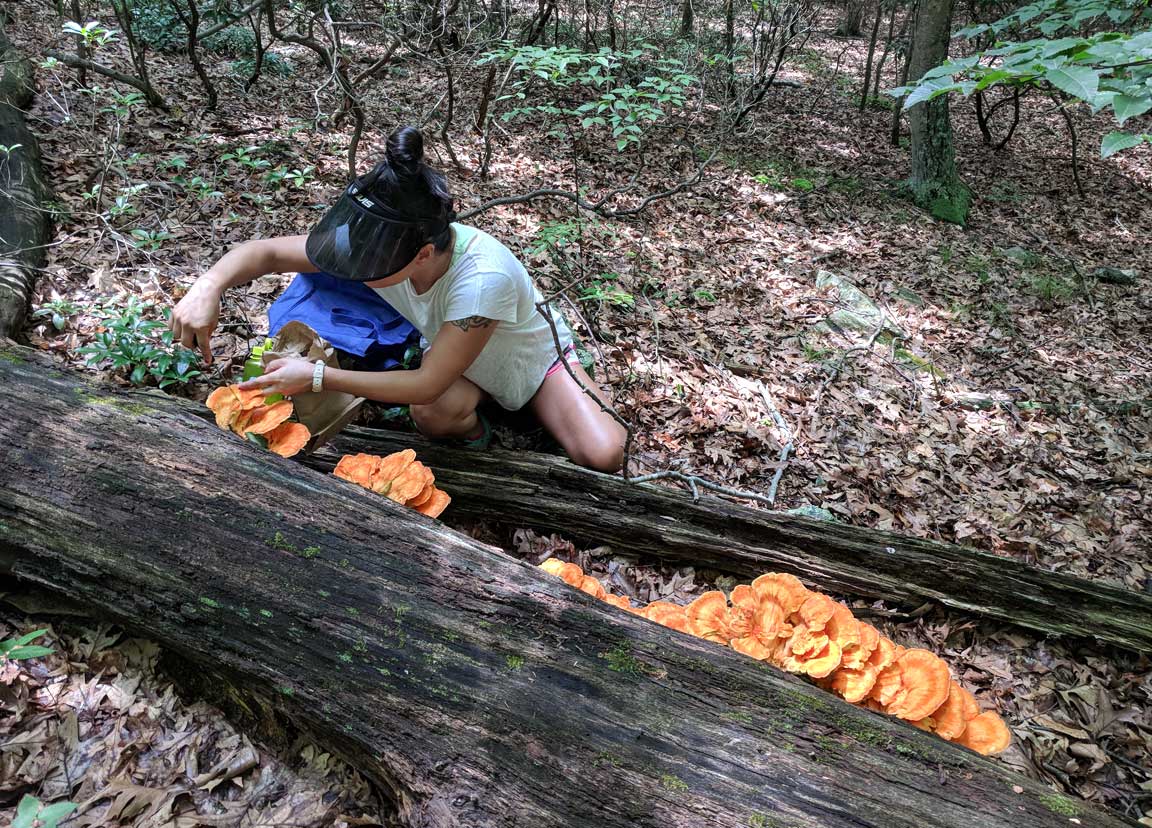 This log will keep fruiting until it’s completely rotted away
This log will keep fruiting until it’s completely rotted away
That’s why mushroom hunters tend to have their own secret spots. Maybe you can get someone to spill their beans, but half the fun is in finding your own secret locations. Sometimes these are on hiking trails, but a lot of good spots are hidden off the beaten path. If you do go off trail, make sure you’re very careful not to get lost (carrying a whistle and compass isn’t a bad idea.) I don’t stray nearly as far in remote parts of Vermont as I do on local trails where I can still hear road traffic.
Even without knowledge of a secret spot, there are conditions you can look for to improve your chances. For example, mushrooms are 90% water and tend to fruit more after heavy rains. There are also certain types of trees and times of year to find each type of mushroom.
The most important part is to hunt often and be persistent
Having the right weather and finding the right trees can give you an edge, but the most important aspect is still putting in the time. One day you might pass by a log with nothing on it, and two days later it can be overflowing with mushrooms. The same park can have completely different mushrooms popping up every few days.
Much like fishing, any given hunt could be a bust, or you might find yourself overwhelmed with mushrooms. When we started going to forays, we learned a lot, but weren’t having much luck. Still, we were having fun, and I knew our odds were ever increasing.
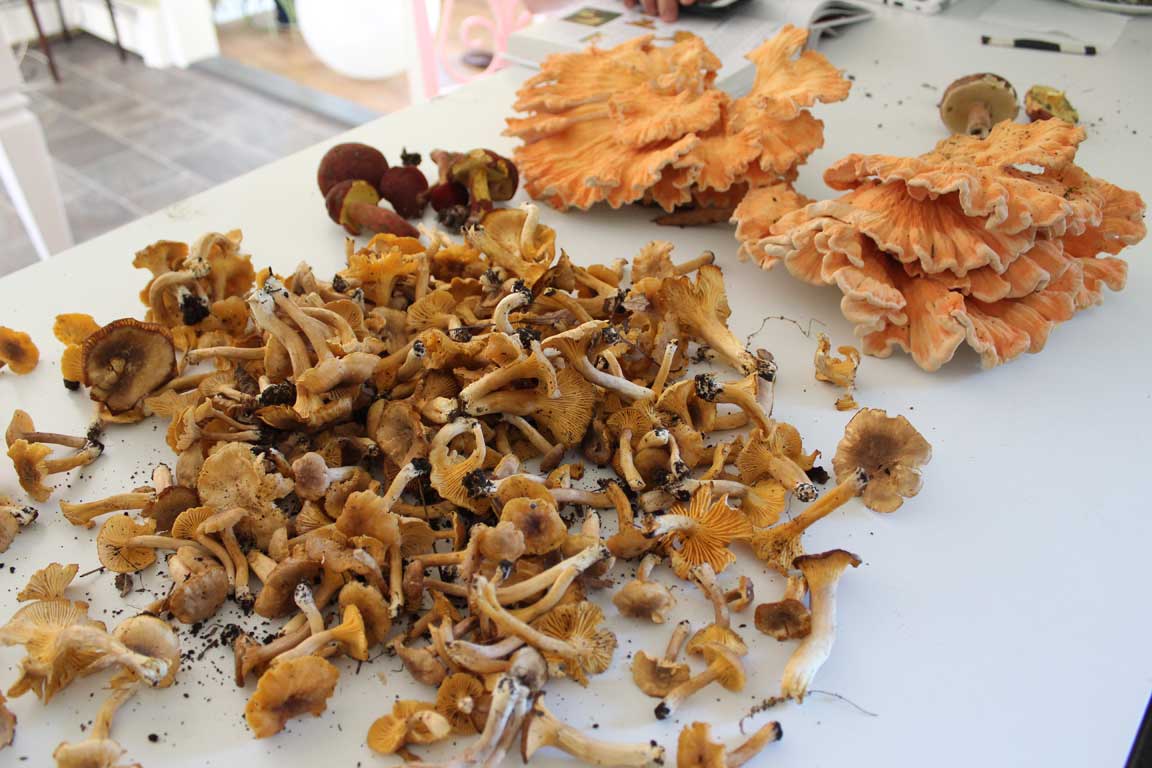 Chanterelles, chicken of the woods, and boletes
Chanterelles, chicken of the woods, and boletes
Finally, on a walk through an old growth oak forest, we started finding some edible boletes. As I was picking them, Mrs CK noticed a few chanterelles. I wandered over to see what she had, and realized she was sitting on a seam of gold. For the next 40 feet, there was a trail of chanterelles. We filled our bags and started heading back to the car. Before we could get there, we came across a big flush of chicken of the woods mushrooms. We could hardly carry the haul back to the car.
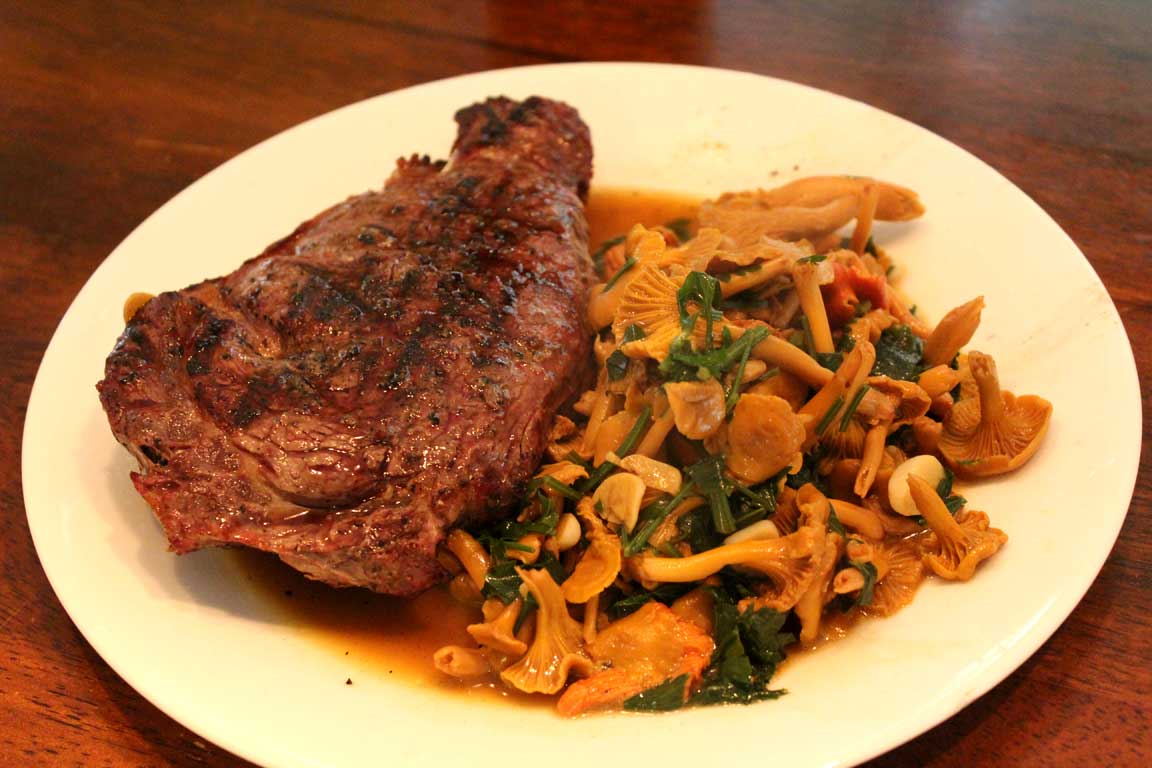 Those chanterelles were excellent sauteed with fresh parsley and garlic
Those chanterelles were excellent sauteed with fresh parsley and garlic
With each find, we were getting better at it. Once your eyes register that visual pattern of mushrooms in the wild, they will start to pick it up again more easily. As the season has progressed, we’ve been getting more and more big hauls.
We even hit the jackpot while vacationing in Vermont. A huge flush of oyster mushrooms were blossoming out of a dead aspen tree. We took as much as we could handle, but left a ton behind.
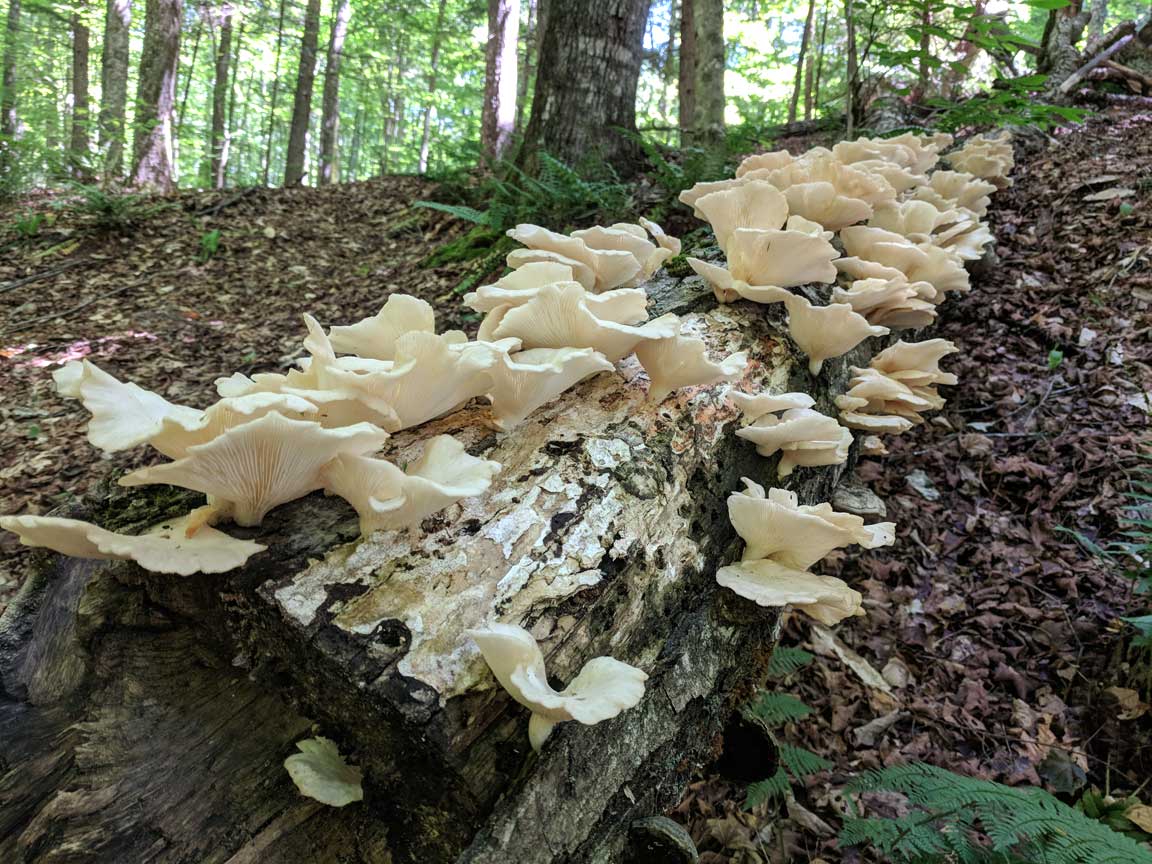 Loaded with oysters
Loaded with oysters
With good rains, the biggest problem for us lately has been eating them all. There are more mushrooms in the woods than we can handle. Combined with plentiful harvests of veggies from our garden, we’ve been eating home grown/foraged meals everyday.
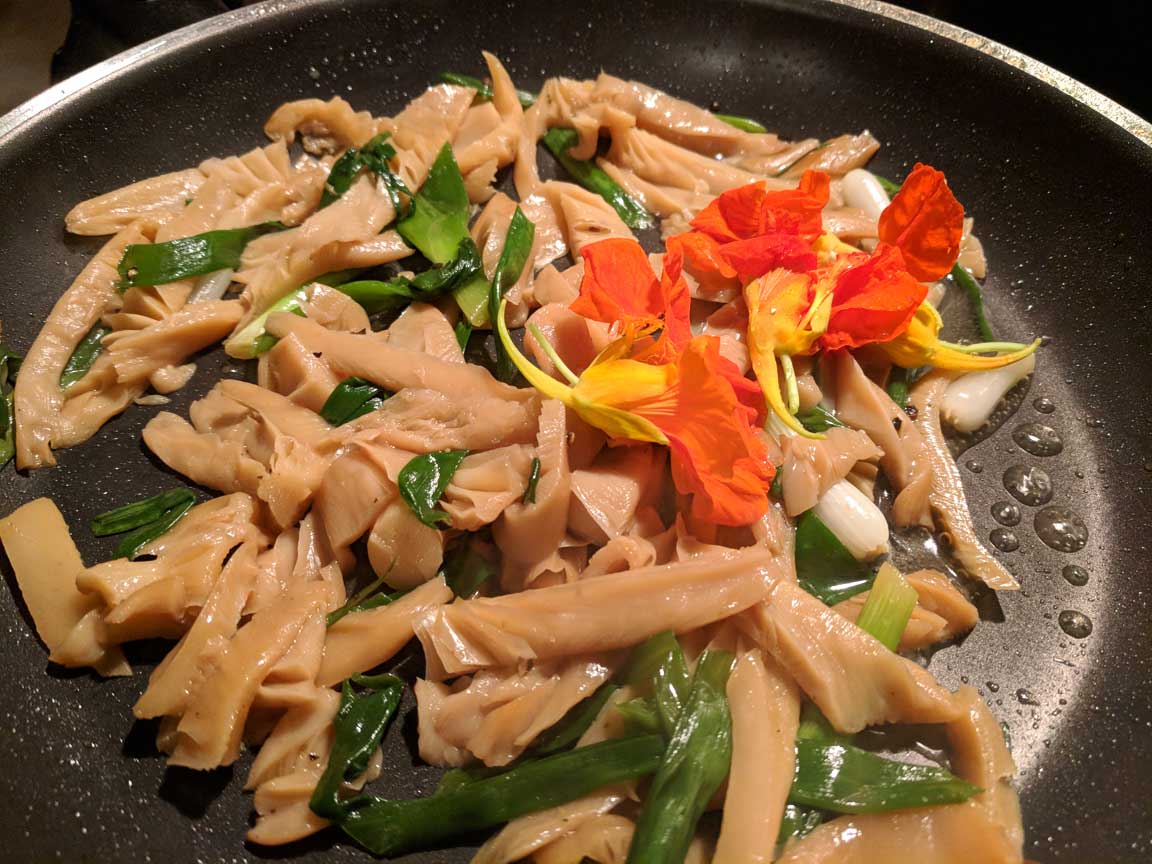 Oyster mushrooms with some garden veggies
Oyster mushrooms with some garden veggies
Mushroom hunting is a great hobby for re-exploring nature
Even without a full time job, I’m constantly occupied with various cheap hobbies that enhance our lifestyle. Mushroom hunting has been my favorite new addition.
If you think you want to start hunting mushrooms, join your local mycological society (here is a list of all the ones in North America) and pick up a good guide (affiliate link) for your region.
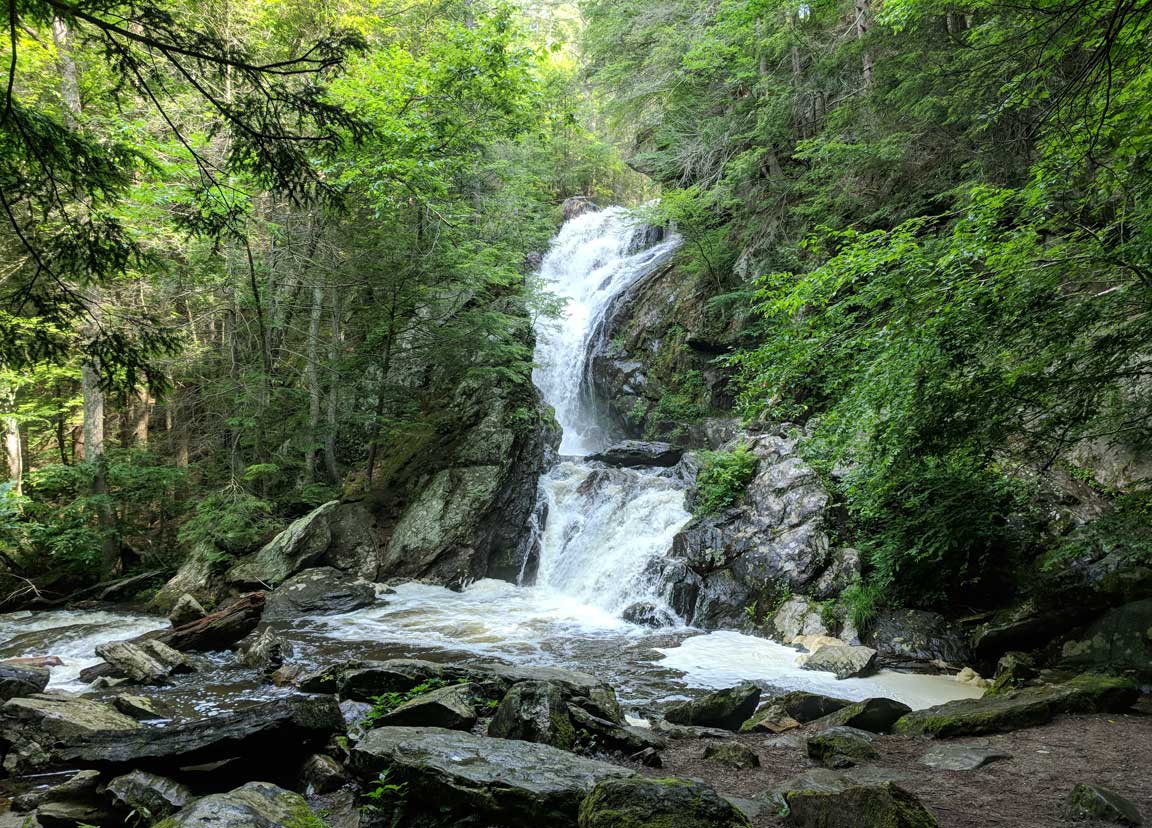 We came across these falls while hunting mushrooms
We came across these falls while hunting mushrooms
The best thing about this hobby is that it’s inspired us to get out into the woods more than ever. We’re constantly finding cool new plants, critters, fungi, and even cool geological features in parks that weren’t on our radar. It’s especially cool because it gets us into local parks on a regular basis, and it’s exciting to see momentous changes in action every day. The free gourmet treats are just an added bonus to all of the adventures, sights, and excitement of hunting mushrooms.